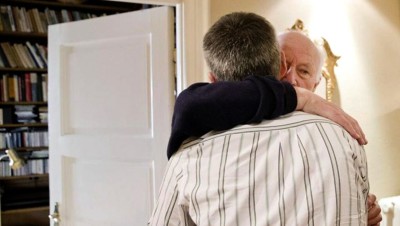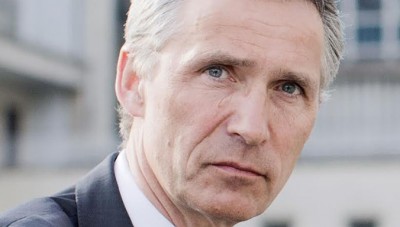NEWS ANALYSIS: After a poignant farewell with his newly widowed father in Oslo earlier this week, the man Norwegians know simply as “Jens” started work on Wednesday as the new secretary general of the powerful military alliance NATO (North Atlantic Treaty Organization) in Brussels. He doesn’t speak French and opposed NATO in his youth, but many other leaders of NATO countries think Norway’s popular former prime minister, Jens Stoltenberg, is the right man at the right time to tackle NATO’s huge challenges and stake out a new course.

Back home in Norway, both his supporters and political opponents have seemed proud that Stoltenberg was the man tapped to lead NATO. It signaled the respect and confidence that national leaders from German Chancellor Angela Merkel, who proposed him as NATO’s next boss, to US President Barack Obama have had in the 55-year-old Labour Party veteran who held high-level political posts for years. Stoltenberg also gets on well with British Prime Minister David Cameron and is known for being a professional but extremely likable man.
It’s his track record in Norway, not least his recent two terms as prime minister, along with his international work through the UN that brought him to the attention of European and other world leaders during the past nine years. He managed to maintain a government coalition of three parties not known for getting along together for eight of those years after first unifying his own party, which had a history of personal conflicts and power struggles. Stoltenberg’s tenure as premier enjoyed unprecedented economic prosperity, not least because of high oil prices, but he was careful not to spend too much of Norway’s oil wealth despite constant temptation. He led the country through arguably its worst tragedy since World War II in 2011, when a home-grown ultra-right-wing terrorist bombed government headquarters and tried to kill off the next generation of Labour Party politicians through his massacre at the party’s youth summer camp. Stoltenberg ironically failed to win his government’s bid for a third term in office just two years after being lauded as a great leader at a time of crisis, but that was mostly because of the plummeting popularity of his coalition partners and what many analysts called “government fatigue.” His Labour Party alone still won the most votes.
Fateful phone call
As Stoltenberg gamely headed back to Parliament as new leader of the opposition, he got a phone call from Merkel and the road to NATO opened up. Now expectations are high that Stoltenberg, with his friendly but no-nonsense style, will be able to apply his talent for consensus building and the “dialogue” he so highly prizes to NATO’s 28 members and, not least, Russian leaders at a time of historic new tension. Stoltenberg’s predecessor, the conservative Danish politician Anders Fogh Rasmussen, reportedly didn’t get along with Russian President Vladimir Putin. Many believe Stoltenberg will.
“Jens Stoltenberg has a much better starting point for his contact with Russia and Putin than Rasmussen had,” foreign policy commentator Erik Sagflaat wrote in Oslo newspaper Dagsavisen on Wednesday. “Stoltenberg solved (Norway’s) most difficult question (about territorial rights in the Barents Sea) with Russia during his time as prime minister because of the necessary mutual confidence they had. That was lacking in relations between Rasmussen and Putin.”
NATO’s relations with Russia in light of the Ukraine crisis are viewed as the most important issue on Stoltenberg’s agenda, and hopes are high that Stoltenberg will be able to speak constructively with Russian leaders. “No one develops any personal relations with Putin,” one of Stoltenberg’s former aides who has taken part in several earlier meetings between Stoltenberg and Putin, told newspaper Aftenposten. “But they have a good working relationship that allows them to speak together.” The aide also mentioned the breakthrough on the Arctic territorial issue, which occurred when Dmitry Medvedev was Russia’s president. Stoltenberg and Medvedev have also met on several occasions and are said to have a good relationship, if not a hearty one.

In addition to the new Russian challenge, fueled at least in part by NATO’s own opportunistic moves after the fall of the Soviet Union, Stoltenberg faces the new brutal threat of Islamic extremists in Iraq and Syria, ongoing involvement in Afghanistan, unrest in Northern Africa and the sheer task of keeping all 28 members of the NATO alliance pulling together. Balancing the interests of Europe and the US can be as challenging as balancing those of NATO and Russia. And threats loom all around.
“This is the most difficult point in time to take over at NATO for the past 25 years,” Espen Barth Eide, a former defense- and foreign minister in Stoltenberg’s government, told Dagsavisen. “The world has become much more dangerous.”
Stoltenberg’s goal is not to use more weapons, although he’s intent on getting member nations to increase their defense spending. Newspaper Aftenposten recently reported that the new Norwegian government will likely feel compelled to continue boosting its own defense budget like Stoltenberg did, not least to set a good example for the rest of NATO. Denmark emerged as a highly cooperative NATO member during Rasmussen’s tenure and Norway is likely to do the same, backed by its oil wealth. Norway, under Stoltenberg’s leadership, played a major role in NATO’s bombing of Libya and is likely to take part in other NATO operations when called upon. Commentators are already claiming that having Stoltenberg in Brussels may be expensive for his homeland in terms of military spending.
Trusted personnel
His request for Norwegian body guards whom he’d be comfortable with was turned down by Norway’s new government because of the expense, but Stoltenberg has taken five trusted Norwegian aides with him to Brussels. They include Vegard Ellefsen, Norway’s most recent ambassador to NATO: Trude Måseide, who was communications chief in Norway’s Office of the Prime Minister and left to work again with Stoltenberg; Randi Næss from Labour’s parliamentary group; Gjermund Eide, a top military officer and former adviser for Stoltenberg’s former defense minister; and Stian Jenssen, who worked in Norway’s defense ministry but has spent the past four years at NATO in Brussels. Norway’s new ambassador to NATO Knut Hauge, meanwhile, has most recently served as Norway’s ambassador to Russia.
Some headlines have referred to Stoltenberg undergoing a “baptism by fire” in Brussels, but he’s got long experience in dealing with the EU and international organizations, not least through his work as a special envoy for climate issues at the UN. He’s been drilled all summer long on NATO issues, military matters, foreign policy and even dealing with an international press corps. He’s surrounded by advisers and a huge organization at NATO headquarters and was spending his day on Wednesday greeting his new staff in Brussels and then all the 28 NATO ambassadors from member countries. Stoltenberg’s uncanny memory for names and faces will be a big help.
Personal matters…
He has said he will miss Oslo and not least its surrounding hills and forests known as marka, where Stoltenberg frequently cycled and skied. But his children have grown up and his diplomat wife Ingrid Schulerud was with him in Brussels this week as they took over their new lavish home behind security gates in the Belgian capital.
The former young radical now has a fancy title, a fancy house and a higher and tax-free salary. Questions remain over how much power he’ll really have, but there’s no question he’ll be working hard. “He’ll probably look back on his prime minister’s post as a part-time job compared to this,” Michael Ulveman, former press chief for Rasmussen, told newspaper Aftenposten. Ulveman called it “an incredibly exhausting job” with high-level meetings all the time with ambassadors, ministers, organizations and partners, and constant travel. The biggest challenge will be setting priorities – “otherwise he’ll be strangled,” Ulveman said.
Stoltenberg told Norwegian reporters on Tuesday, though, that he was really looking forward to the job, “and to be able to have an opinion on issues again,” after several months of “withdrawal” after stepping down as head of the Labour Party in June and staying out of Rasmussen’s way before taking over at NATO. “I am really ready for this,” he said. “I’ve never said as little about security policies as I have during the past few months.” He said he was also ready for “surprises” and prepared for “big and small crises.”
…and a room for his dad
“I want to be a leader of NATO who’s there for all the employees, and to build up a team with them,” Stoltenberg said. “They are competent and do a great job. I also want to have good and close contact with all the member nations.”
He’ll also carve out time for his family, and looks forward to have his father come visit. “I have promised him that he’ll have his own room in the house, waiting for him,” Stoltenberg said.
newsinenglish.no/Nina Berglund

